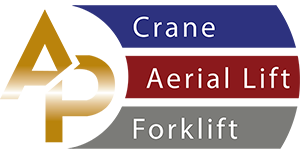
Aerial Lift Fall Protection: Ensuring Safety while Working at Heights
Working at heights is a frequent activity in many sectors, but it poses a major risk to workers' safety, particularly when aerial lifts are used. Falls from great heights are one of the main causes of death in the workplace, according to the Bureau of Labor Statistics, with the construction industry accounting for the greatest number of fatalities. These accidents can, thankfully, be avoided with proper fall protection equipment and attention to safety rules. This article will go over aerial lift fall protection, including its significance, laws, and the various forms of fall protection devices that are available.
Understanding Aerial Lift Fall Protection
Aerial lifts are extensively used in building, maintenance, and repair operations to provide personnel with access to elevated work sites. Working at heights, especially in an aerial lift, poses a significant risk of falling. This is where understanding aerial lift fall protection comes in, to keep workers from falling from the lift.
Adequate Aerial Lift Fall Protection
Adequate fall protection measures must be implemented to ensure worker safety. Aerial lift fall safety can help organizations avoid costly litigation and penalties by preventing accidents and saving lives. It also gives employees trust that their employer is concerned about their safety.
OSHA Regulations for Aerial Lift Fall Protection
The Occupational Safety and Health Administration (OSHA) has developed workplace fall protection requirements. Employers must offer fall protection devices to workers who are at risk of falling from a height of six feet or more. OSHA requires employers to guarantee that while operating on an aerial lift, each person is tied off to a proper anchor point.
Types of Fall Protection Equipment for Aerial Lifts
There are different types of fall protection equipment designed for use in aerial lifts. These include:
- Body Harnesses
A body harness is an important piece of fall prevention equipment that keeps employees from falling from aerial lifts. It is worn around the torso and contains D-rings for attaching a lifeline or lanyard. Body harnesses spread the impact force over a broader area of the body, lowering the chance of harm in the event of a fall. - Lanyards
Lanyards are flexible lines that connect the body harness to the aerial lift's anchor point. It is long enough to allow for movement while working but short enough to keep the worker from collapsing if he or she falls. - Lifelines
A lifeline is a rope or cable that is attached to the anchor point and the worker's harness. It provides the worker with a continuous connection, preventing falls in the case of an inadvertent severance from the lift. - Self-Retracting Lifelines
A self-retracting lifeline (SRL) is a form of the lifeline that automatically retracts and can be modified to provide enough slack for the worker to move around while working. - Guardrails
Guardrails are physical obstacles that surround the work platform of an aerial lift, preventing falls from the edge of the lift. They are built to resist the force of a person collapsing on them and to serve as a constant barrier to safety.
Conclusion
Fall protection for aerial lifts is vital for guaranteeing worker safety when operating at heights. Body harnesses, lanyards, lifelines, self-retracting lifelines, and guardrails, when used correctly, can avoid falls, injuries, and fatalities. To avoid hefty penalties and litigation, employers must follow OSHA standards on fall protection. Employers may establish a safer working environment and reduce accidents by putting workers' safety first and investing in fall-prevention equipment.
FAQs- Q. Why is fall protection necessary for aerial lift workers?
A. Fall protection is necessary for aerial lift workers because working at heights poses a significant risk of falling, which can result in injuries or fatalities. Aerial lift fall protection can prevent such accidents from occurring, ensuring the safety of workers. - Q. What are the consequences of not using fall protection in aerial lifts?
A. Not using fall protection in aerial lifts can lead to serious injuries or fatalities, which can have significant financial and legal consequences for the employer. Failure to comply with OSHA regulations on fall protection can result in penalties and lawsuits. - Q. How often should fall protection equipment be inspected?
A. Fall protection equipment should be inspected before each use and regularly maintained and checked for wear and tear. Employers should follow the manufacturer's instructions and OSHA regulations on inspection and maintenance. - Q. Can guardrails be used as the sole form of fall protection in aerial lifts?
A. Guardrails can be used as the sole form of fall protection in aerial lifts if they meet OSHA requirements and are properly installed and maintained. However, it is still recommended to use other fall protection equipment in addition to guardrails for added safety.
Contact Us
Contact us today if you need aerial lift fall protection training. We offer comprehensive and hands-on training programs that will provide your employees with all of the knowledge and skills they need to operate aerial lifts safely and securely. To reduce the risk of falls and injuries, our training programs emphasize the use of adequate fall prevention equipment and best practices.
Whether you need to train one individual or an entire team, our training solutions may be tailored to your unique requirements. Call us at (888) 501-1355 to learn more about our aerial lift fall protection training. Our customer service representatives will gladly answer any questions you may have and assist you in scheduling the training session that is most appropriate for you.
